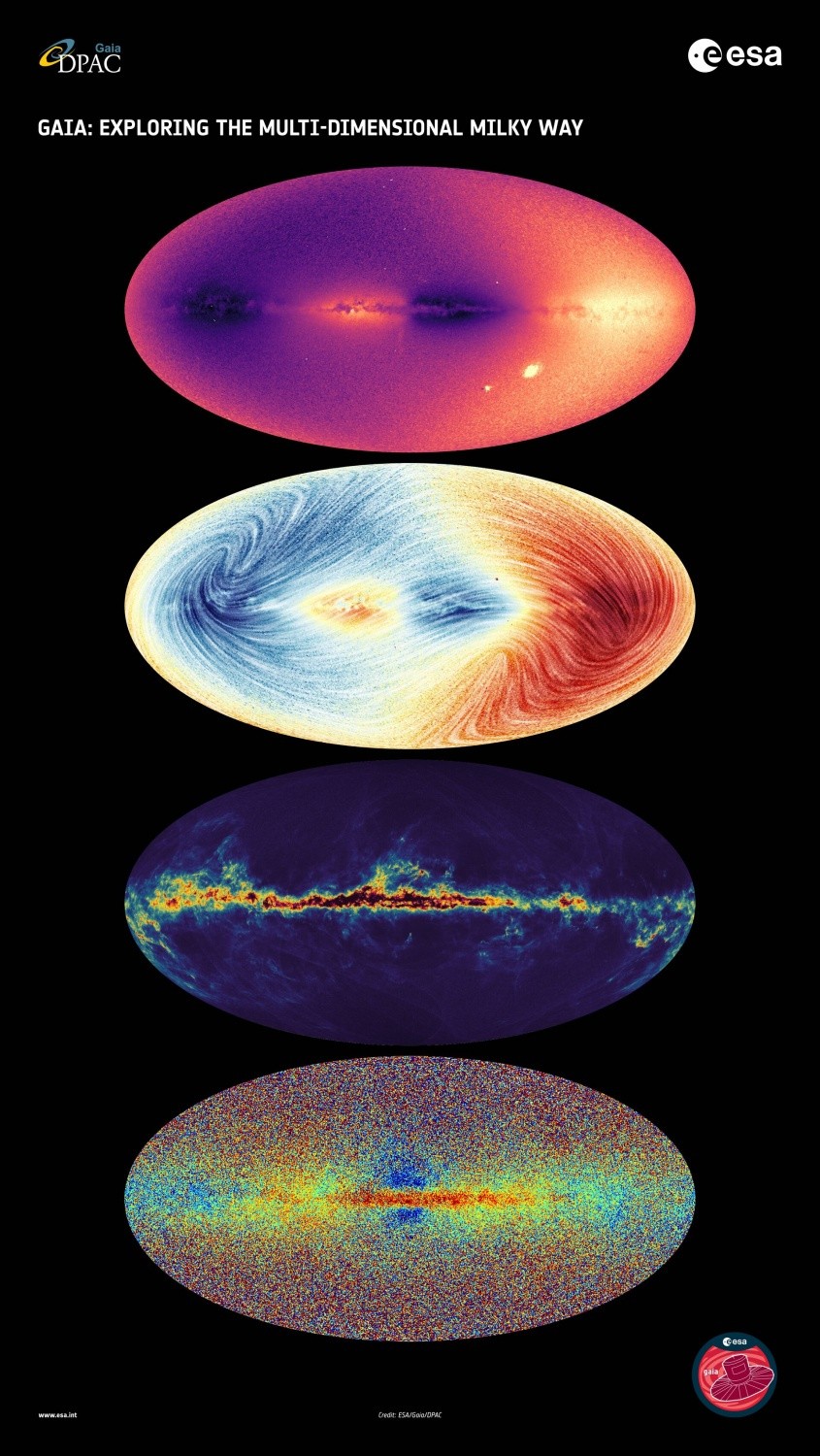People may be able to reverse the course of stars to learn more about the history of the Milky Way, thanks to new data that the European Space Agency (ESA) has made available from its Gaia space observatory.
The ESA has published the third data dump from the Gaia mission. According to IFLScience, the new map provides more than enough space data to let any earthling feel very small.
The agency based its recent publication on December 2020 data, which had more than 1.8 billion stars. It covers these stars' positions, motions, brightness, and colors. The third information release, which took place just this week, dramatically expands on this material.
Since its debut in 2013, Gaia has been surveying known stars and looking for new ones from its vantage point of 1.5 million kilometers from Earth. 1.1 billion stars' brightness and locations were covered in the first data release, which was released in 2016, and 1.7 billion stars' colors, temperatures, and radii were covered in the second release, published in 2018.

ESA's New Map Reveals Additional Milky Way Secrets
ESA's new publications unveiled the chemical compositions of about 2 billion stars, a factor of 10 more than before, and five more about their radial velocities. It also offers more specific information on the stars' temperatures, hues, and masses.
Additionally, the data cache contains millions of galaxies aside from the known catalogs of binary stars, asteroids, and planets' moons.
We can now follow the history of the Milky Way thanks to Gaia's ability to provide more precise chemical and radial velocity maps than ground-based observatories.
"Gaia is like a time machine that allows us to look back and infer the history of our galaxy," said George Seabroke at University College London, New Scientist reported.
Stronger signals from statistical noise have been separated by repeated examinations of the same stars. It has the effect of causing Gaia to appear to be able to pick up on minute changes and vibrations on some star surfaces that it was not initially intended to.
Starquakes, a specific kind of tsunami-like vibration that modifies a star's form, have been observed on some stars when they shouldn't have been feasible based on existing ideas.
"Gaia is opening a goldmine for 'asteroseismology' of massive stars," said Conny Aerts of KU Leuven in Belgium, a member of the Gaia collaboration, in a statement from the agency.
About Gaia Data
PC Gamer mentioned that the Gaia data resembles a zoomed-out image of the Milky Way but shows the locations of stars, planets, asteroids, and even dust in the system.
Additionally, it can identify and differentiate binary stars, of which our galaxy has around 813,000. It has observed far more planets than Starfield will have. By looking for fluctuations in brightness, the data and sensors are even capable of determining the changes that have taken place within a star.
Gaia is also gathering information for which it was not even intended. The effectiveness of these scans has even allowed for the detection and cataloging of starquakes, which are movements on a star's surface. We can learn much more about the burning gas balls and their interior workings by studying the starquakes of thousands of different stars.
You are free to browse the Gaia missions data on its official website. Instead of lovely space photos, this is all dense data that is exceptionally detailed. There are several steps available for those who are dedicated and want to solve the secrets of our galaxy.
RELATED ARTICLE : ESA's Gaia Can Detect Starquakes, One of the Most Shocking Discoveries Revealed in Newly Released Spectroscopy Data
Check out more news and information on Space in Science Times.
© 2026 ScienceTimes.com All rights reserved. Do not reproduce without permission. The window to the world of Science Times.












